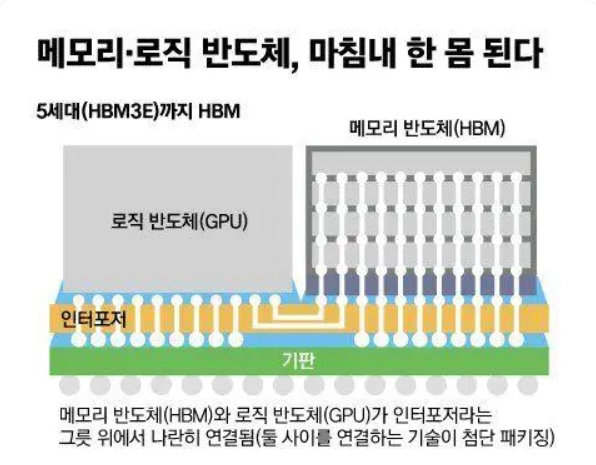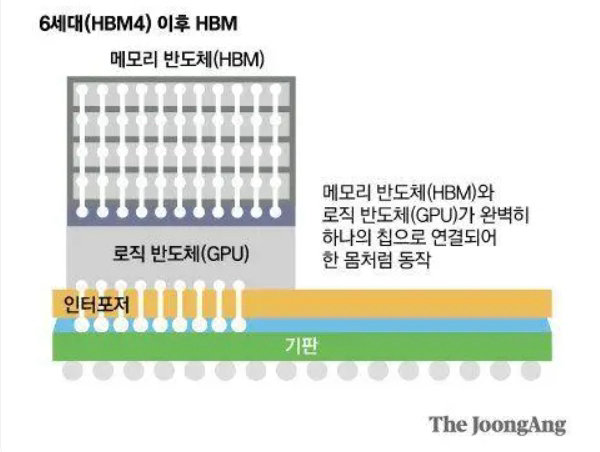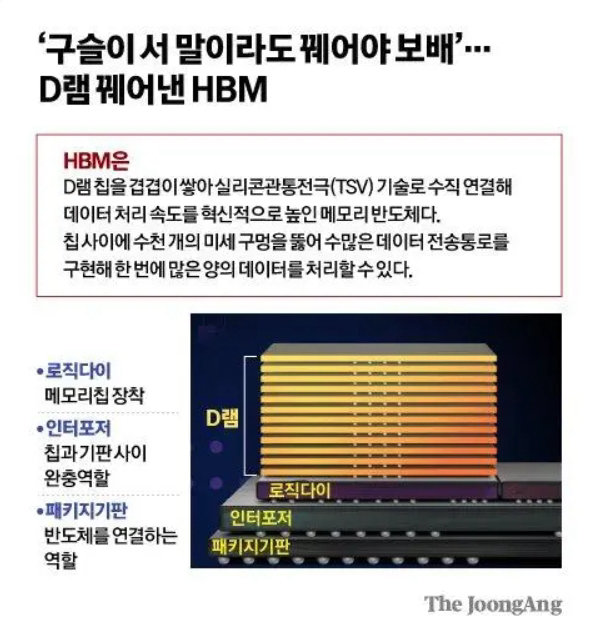Nvidia teamed up with SK Hynix to attempt to stack HBM memory 3D onto the GPU core
According to reports, SK Hynix is discussing its HBM4 integrated design method with several semiconductor companies, including Nvidia.

Foreign media believe that Nvidia and SK Hynix are likely to jointly design this integrated chip and use TSMC for OEM, and then stack SK Hynix's HBM4 chip onto the logic chip using TSMC's wafer bonding technology. In order to achieve the integration and collaboration of memory chips and logic chips, joint design is inevitable.
If SK Hynix can succeed, it may greatly change the way the industry operates, as it will not only change the interconnection of logic and storage new chips, but also change their manufacturing methods.
At present, HBM stacking is mainly placed on the intermediate layer next to the CPU or GPU, and connected to the logic chip using a 1024bit interface. SK Hynix's goal is to stack HBM4 directly on the logic chip, completely eliminating the intermediate layer.
To some extent, this method is somewhat similar to AMD's 3D V-Cache stacking, which directly encapsulates L3 SRAM cache on the CPU chip, while in the case of HBM, it can achieve higher capacity and cheaper (IT Home note: HBM is obviously slower than cache speed).
One of the main factors currently troubling the industry is that HBM4 requires a 2048bit interface, making the intermediary layer of HBM4 very complex and costly. Therefore, if memory and logic chips can be stacked together, it is feasible for economic benefits, but it also raises another issue: heat dissipation.
Modern logic chips, such as the Nvidia H100, are equipped with huge HBM3 memory, which not only brings huge VRAM bandwidth but also generates hundreds of watts of thermal energy. Therefore, cooling the logic and memory packaging assembly may require very complex methods, even considering liquid cooling and/or immersion cooling.
If the heat dissipation problem is solved after two to three generations, then HBM and GPU will be able to operate as one without the need for an intermediate layer, "said Kim Jung ho, a professor at the Department of Electrical and Electronic Engineering at the Korean Academy of Science and Technology.
An industry insider told Joongang, "In the next 10 years, the 'game rules' of semiconductors may change, and the difference between memory and logic semiconductors may become insignificant.
(From IT home)


